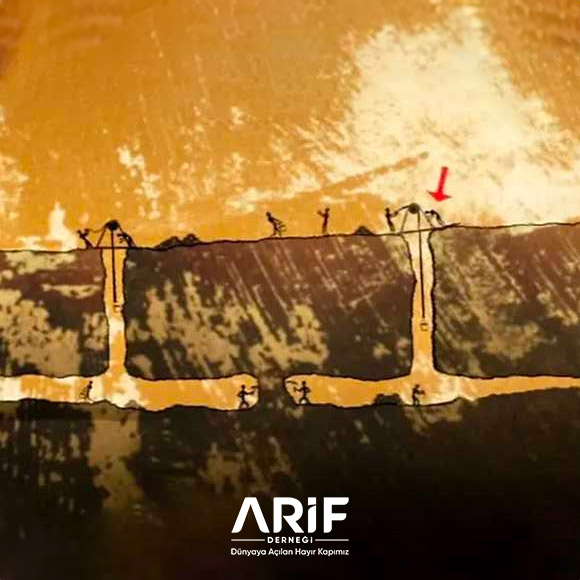Blog
2,000-Year-Old Kariz Turk Channels

The Turks built underground water channels 100 meters below the surface in China’s Xinjiang region 2,000 years ago. Spanning a total length of 5,000 kilometers, these channels allowed them to cultivate the world’s finest grapes in the heart of the desert. Remarkably, these mysterious channels are still in use today. The city of Turpan, the central hub of Turpan County, lies in an extremely arid region with no natural water sources and is situated below sea level.
Underground Water Channels
2,000 years ago, due to the water shortage in the region, tunnels were dug from the Tian Shan Mountains towards the direction of Turpan. Over time, the total length of these tunnels reached 5,272 kilometers. Once completed, the project attracted visitors with its beautiful, paradise-like landscapes.
Today, 30% of Turpan’s water needs are still met by the underground wells of the Karez channels. Historically known as well channels, the Karez system is an irrigation project built by the local people to make use of water from melted snow in the Tian Shan Mountains that seeped underground

The exhibition created to showcase the history and current features of the Karez channels has attracted great interest from visitors to the region. The Karez Channel Museum displays a 3D model of the underground water channels, clearly illustrating how humans have defied natural conditions. The underground channels, which have served the local people for centuries from the Tian Shan Mountains, were built at a height of 1.5 meters and a width of 60-70 cm, carrying 858 cubic meters of water daily. However, today, this volume has decreased by nearly one-third.
In the region, which contains hundreds of channels, viticulture continues, and academic agricultural research is also being conducted.
The Grapes of Flame Mountain
Turpan, which receives almost no rainfall throughout the year, is home to the famous vineyards irrigated by two thousand-year-old water channels, making it the region’s largest source of income. Grapes play a central role in every aspect of life in Turpan. The region grows dozens of varieties of grapes, which are sold both fresh and dried. The grapes are primarily consumed as table grapes, as the thin-skinned, highly flavorful varieties are abundant in Turpan. In the dried grape varieties, the drying process plays a significant role in the value of the grapes. Specially grown grapes dried on the vine, as well as those dried in the open air, in the shade, and with the effect of the wind, are offered to consumers, alongside those dried in special adobe storage houses.
Visitors to the region, after exploring its cultural and historical heritage, find relaxation in the “Grape Valley,” nestled between the Flame Mountain, known as Hou Yan Shan in Chinese. The valley, covered with greenery, offers the hospitality and culture of the Uygur people. Guests are guided through the vineyards, where different grape varieties and production methods are showcased, providing information and opportunities to taste the products. In the 16-square-kilometer Grape Valley, located at the foot of Flame Mountain, 10,000 Uygur families not only engage in production but also welcome guests from both within and outside the region.
